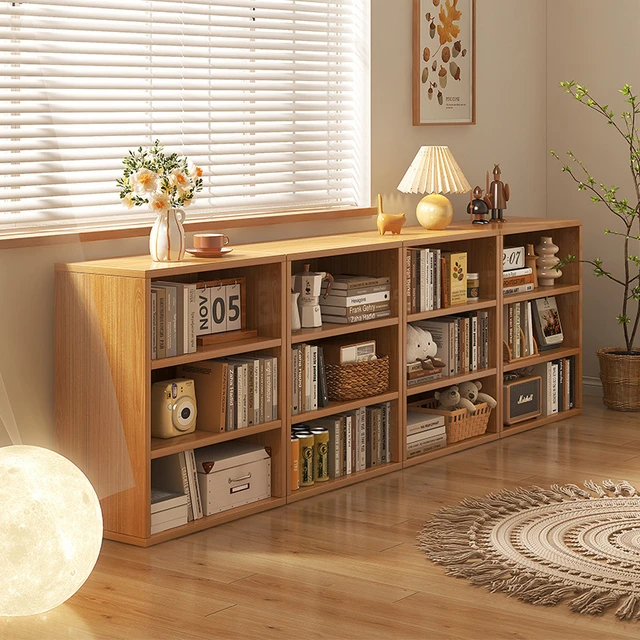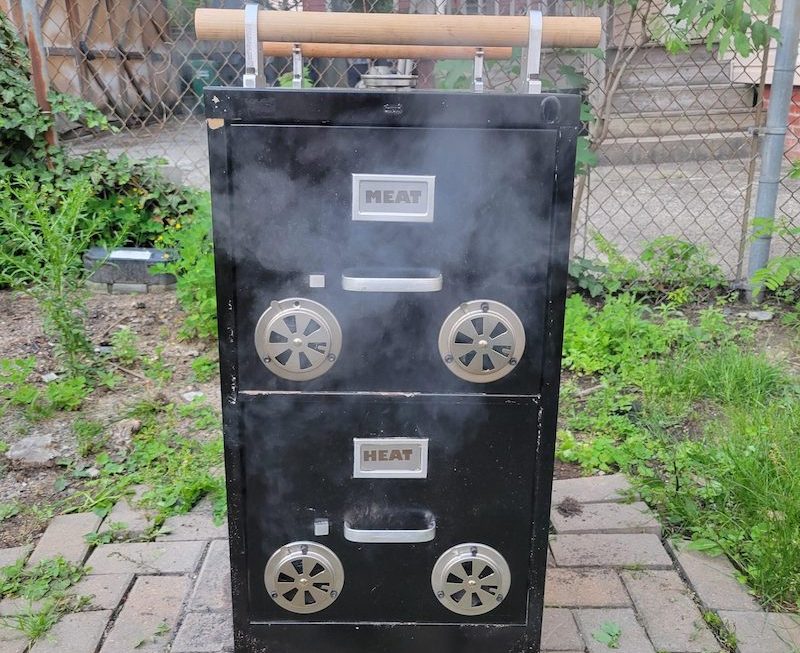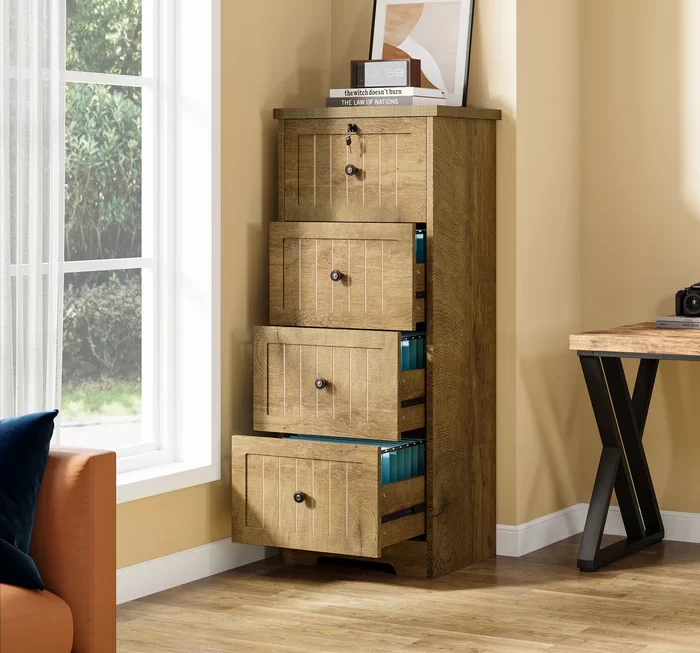 Introduction:
Introduction:
Styling a bookcase is a creative and rewarding way to showcase your personality and elevate the aesthetic of your space. Whether you have a traditional standing bookcase or a modern floating shelf, properly styling it can transform it from a plain storage unit to a visually appealing focal point. In this article, we will provide you with tips and techniques for styling a bookcase, helping you create a beautiful and well-organized display that reflects your personal style.
 Some common types of bookcases:
Some common types of bookcases:
There are various types of bookcases available, each offering different designs, materials, and functionalities. Here are some common types of bookcases:
Standard Bookcase:
A standard bookcase is the most common type, typically consisting of a tall and vertical structure with multiple shelves. It provides ample space for books and other items, and it can be made from various materials such as wood, metal, or laminate.
Cube Bookcase:
Cube bookcases feature cubby holes or compartments, often in a grid-like pattern. These compartments can be used to store books, magazines, storage bins, or decorative items. Cube bookcases offer a versatile and modular storage solution.
Ladder Bookcase:
Ladder bookcases have a unique leaning design, resembling a ladder. The shelves gradually decrease in size from bottom to top, creating a visually interesting display. Ladder bookcases are often made of wood and provide a stylish and space-saving option for displaying books and decor.
Barrister Bookcase:
Barrister bookcases have glass doors that slide up and down or swing open. These doors protect books from dust and provide a more refined and formal appearance. Barrister bookcases are often made from wood and are known for their vintage charm.
Corner Bookcase:
As the name suggests, corner bookcases are designed to fit into corners, utilizing space that might otherwise be left unused. They typically have a triangular or wedged shape and can be tall or short, depending on the available space.Can be used in combination with a corner table.
Modular Bookcase:
Modular bookcases are designed to be customized and adapted to different spaces and needs. They consist of separate units that can be combined and rearranged in various configurations. This allows for flexibility and scalability in organizing books and other items.
Open Back Bookcase:
Open back bookcases are characterized by their open design at the back. They can be placed against a wall or used as a room divider, allowing light and air to flow through while providing an open and modern look.
Floating Bookshelf:
Floating bookshelves are wall-mounted shelves that give the illusion of books or objects floating on the wall. They provide a minimalist and contemporary display option, particularly suited for smaller spaces or where floor space needs to be maximized.
When choosing a bookcase, consider factors such as the available space, storage needs, style preferences, and overall room aesthetics. Each type of bookcase offers unique features and advantages, so selecting the right one depends on your specific requirements and personal taste.
 Introduction to Styling a Bookcase
Introduction to Styling a Bookcase
Styling a bookcase involves arranging books, decorative objects, and personal mementos to create an attractive and cohesive display.
A. Aesthetic Appeal: A well-styled bookcase not only enhances the overall aesthetics of a room but also displays your interests and personal style.
B. Organization and Functionality: Proper styling ensures that the items on the bookcase are organized in a way that is both visually appealing and functional.
Clearing and Preparing the Bookcase
Before styling the bookcase, it is important to clear and prepare the space.
A. Remove Items: Take out all items from the bookcase, including books, decorative objects, and any clutter or outdated items.
B. Clean and Dust: Wipe down the shelves and surfaces of the bookcase to remove dust and debris.
C. Prioritize and Sort: Sort through the items you have removed and prioritize those you want to display. Consider donating or finding alternative storage for items that no longer serve a purpose.
 Styling Techniques
Styling Techniques
Mastering a few styling techniques can help you create a visually appealing and balanced display.
A. Arrange Books: Organize books by size, color, or subject matter. Mix vertical and horizontal orientations for a more dynamic look. Consider incorporating bookends or bookshelf accessories.
B. Create Visual Balance: Distribute items evenly across the bookcase to create visual balance. Balance the colors, textures, and heights of objects throughout the shelves.
C. Layered Display: Use the front edge of the shelves to display smaller decorative objects or artwork, adding depth and visual interest.
D. Negative Space: Allow some empty space on the shelves to keep the display from appearing cluttered. Negative space helps highlight individual items and provides a visual break.
Color and Texture Coordination
Intentional color and texture coordination can enhance the overall aesthetic of the bookcase.
A. Color Palette: Choose a color palette that complements the existing room decor. Consider using a mix of coordinating colors or sticking to a monochromatic scheme.
B. Color Blocking: Group books or decorative objects of similar colors together to create color blocks and a cohesive look.
C. Texture Variety: Incorporate a mix of textures, such as natural materials, metallic finishes, or textured ceramics, to add depth and visual interest to the display.
Personal Touches and Decorative Objects
Include personal mementos and meaningful objects to infuse your bookcase with personality.
A. Artwork and Photographs: Display framed artwork, photographs, or prints on the bookcase to personalize the space.
B. Collectibles and Memorabilia: Showcase your favorite collectibles, antique items, or memorabilia that reflect your interests and passions.
C. Plants and Greenery: Add small potted plants or a vase with fresh flowers to bring life, color, and freshness to the bookcase display.
Changing and Updating the Display
Periodically changing and updating the bookcase display keeps it fresh and visually engaging.
A. Seasonal Rotation: Consider changing decorative objects or adding seasonal touches to reflect the time of year.
B. Collections and Hobbies: Highlight different collections or hobbies periodically to keep the display interesting and personal.
C. Edit and Reorganize: Regularly edit and reorganize the bookcase to maintain a clutter-free and visually appealing space.
 Conclusion
Conclusion
Styling a bookcase allows you to showcase your personality, interests, and style while adding visual appeal to the room. By following these tips and techniques, you can create a beautifully styled bookcase that not only displays your books but also incorporates meaningful objects and decorative elements. Remember to prioritize organization and functionality while incorporating techniques such as arranging books, creating visual balance, and coordinating colors and textures. Don’t be afraid to add personal touches and update the display periodically. With these considerations in mind, you can transform your bookcase into a visually captivating and personalized space that reflects your individual style and interests.



